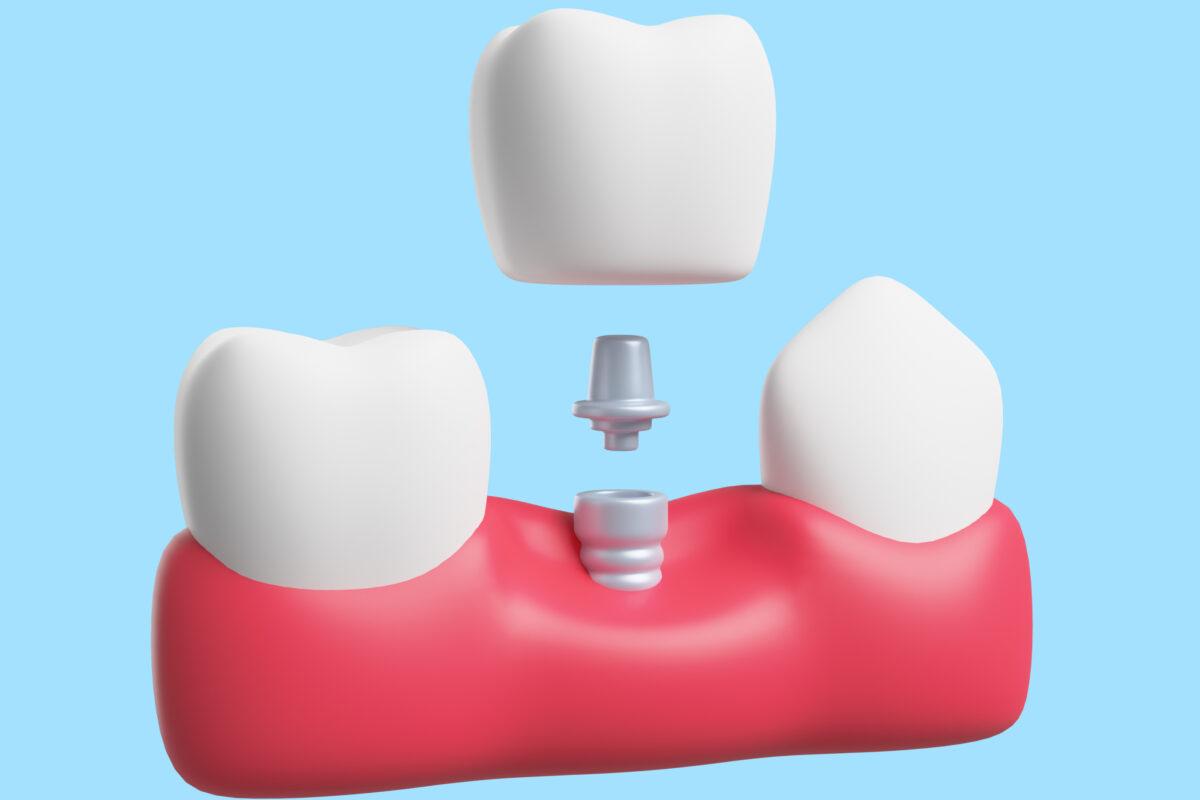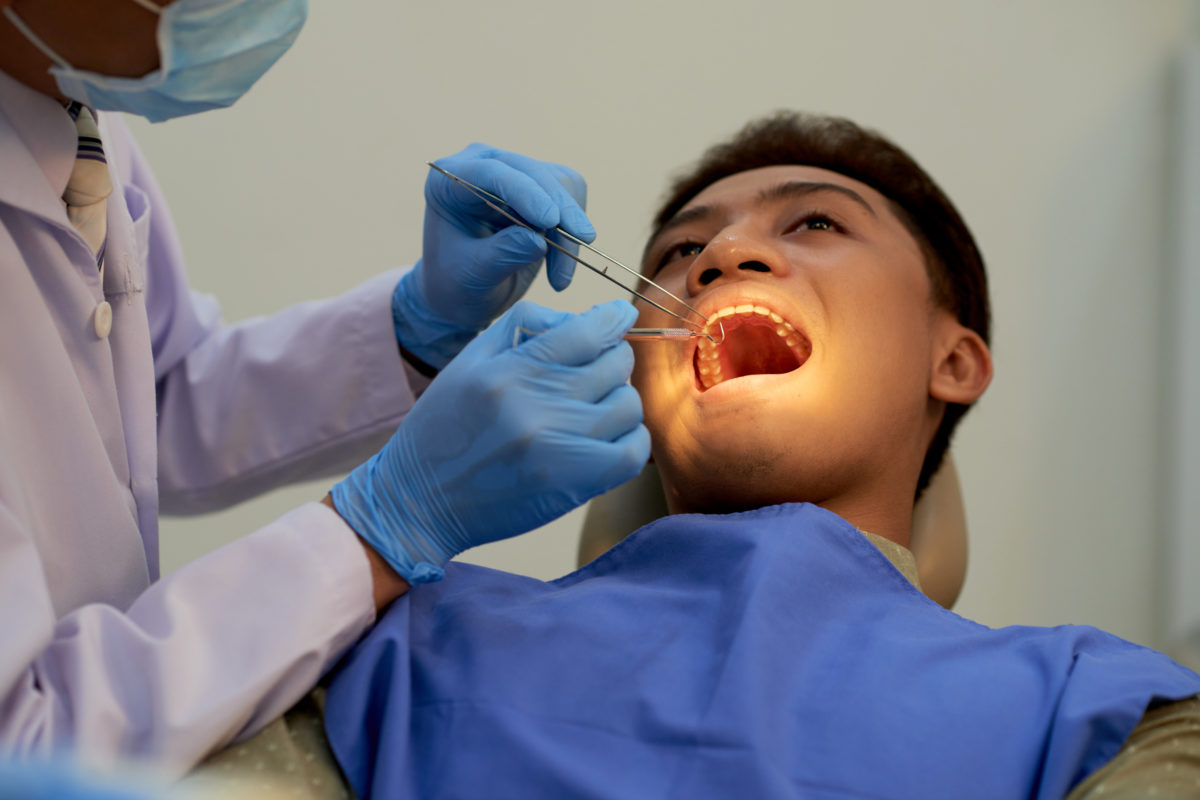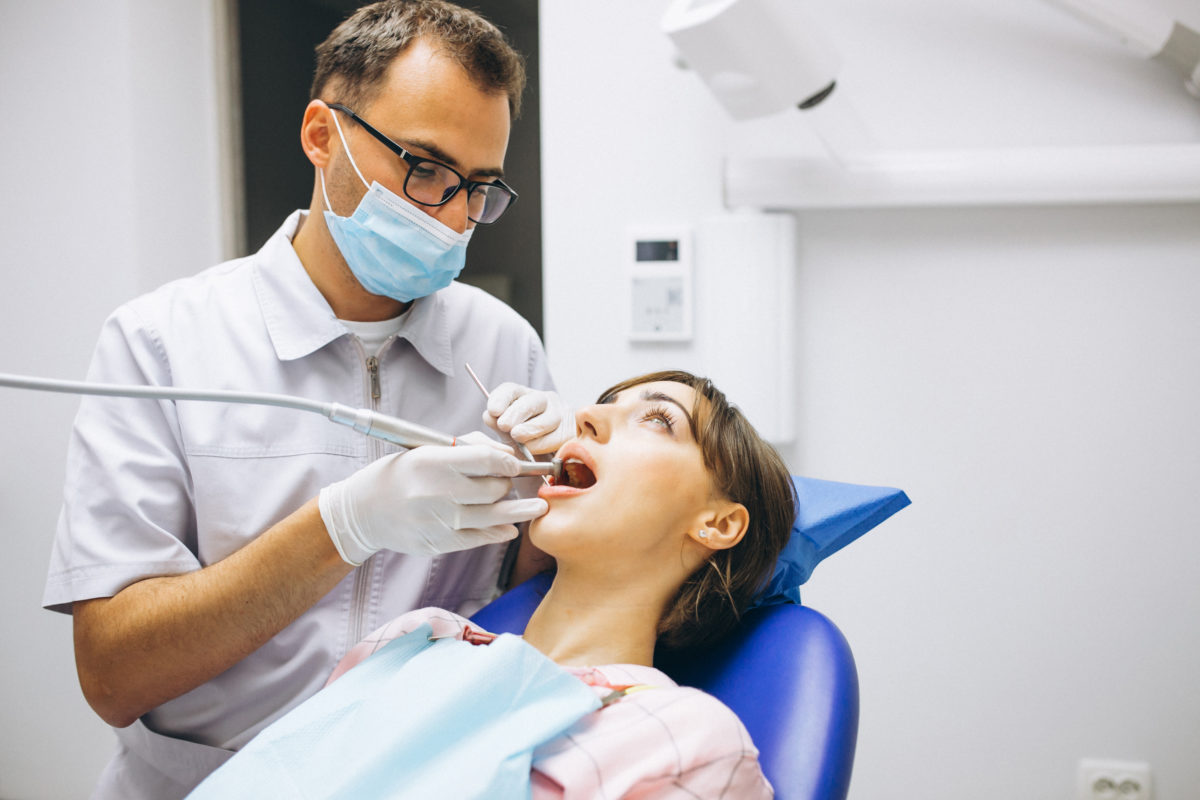Restoration and replacement of damaged or missing teeth requires a high level of expertise to ensure that it does not impact the facial structure and has pleasant aesthetics. Prosthodontics is the branch of dentistry that includes treatment of dental and facial structure issues with the implantation of biocompatible tooth substitutes for diseased, missing or injured teeth. Patients seeking prosthodontic rehabilitation include individuals who have been in an accident causing oral trauma, have congenital facial structural issues, have temporomandibular joint (TMJ) disorders, have issues with sleep or snoring, for oral cancer reconstruction, or even for cosmetic reasons.
Dental Restoration Options
The most common artificial appliances used in prosthodontics are dental crowns, bridges, dental implants, and dentures. All of these tooth substitutes are made in dental laboratories by prosthodontists and dental laboratory technicians based on a lifesize replica of the mouth of the patient.
Dental Crowns
Dental crowns come under fixed prosthodontics that form a tooth-shaped covering over an existing decayed, damaged, or worn-down tooth. Dental crowns are also used in order to protect dental implants and teeth that have undergone root canal treatment (RCT). Resin, metal, and porcelain are the materials that are commonly used to fabricate the crowns.
Dental Bridges
Dental bridges are fixed prosthodontic appliances that ‘bridge the gap’ created by missing tooth/teeth. It consists of crowns that fit over the natural teeth at the ends of the gap and artificial teeth that fill the space created by the missing teeth. The four main types of dental bridges are traditional dental bridges, cantilever bridges, Maryland dental bridges, and implant-supported bridges.
Dental Implants
Dental implants are artificial devices that are substitutes for the roots of teeth and provide rigid strength and support to the dental bridge, denture or maxillofacial prosthesis. Implants are also a good option when there are no natural roots of teeth available to attach the dentures or dental bridges on. They are usually made of titanium or its alloys and are shaped like a screw or cylinder to mimic the shape of the natural tooth root.
Dentures
Dentures are removable prostheses that are attached to the gums and act as replacements for missing teeth and surrounding oral tissues. There are two types of dentures – complete dentures for replacement when all of the teeth are missing, and partial dentures where only some of the teeth are being replaced. Dentures may be made of acrylic, metal, plastic or a combination of these and they may replace either the upper or lower arch or both of them together.
Cost Comparison – Bridges, Implants and Dentures
On the basis of price alone, dentures are the most cost-effective, followed by dental bridges, while dental implants are on the costlier end. However, there are a lot of other factors that are considered by the prosthodontist before deciding on a particular restoration option. The number of missing teeth is the primary determinant. Where there are a lot of missing teeth that need to be replaced, dentures are the most effective and cost-efficient option. However, when there are only a couple of teeth missing from different parts of the upper or lower arch, it makes much more sense to fill the gap with a dental implant. Similarly, if there is a gap of 3-4 teeth in one region, and if the remaining teeth and bone structure is strong, dental bridges prove to be most effective.
Lifespan and Durability – Bridges, Implants and Dentures
The lifespan and durability of dental restoration appliances depend on multiple factors like the surgical skill of the oral surgeon, the kind of aftercare provided, the oral hygiene habits of the patient after the treatment is completed, lifestyle habits like smoking or alcohol consumption, bone density and volume of the jawbone, and the patient’s other health conditions, such as uncontrolled diabetes, autoimmune disorders, or treatment for chronic diseases like cancer. The lifespan of prosthodontic appliances can only be mentioned as a broad guideline.
Dental bridges generally last between 5-15 years depending on the care and maintenance given to them. Since they are fixed appliances, they need care just like natural teeth with proper brushing, flossing, and regular dental cleaning. It is also important to avoid biting/chewing on hard or chewy foods using the dental bridge.
Dental implants have exceptionally long lifespans, are very durable and can easily last for more than 20 years and are considered a long-term solution to oral problems. This may be subject to factors like the size of the implant, the position where it has been implanted, and the kind of functional force it has to withstand.
Dentures are generally robust and durable but the average lifespan of dentures is between 7-10 years, depending on the quality of the material used. The lifespan of dentures may be dependent on an additional factor – age of the patient. As we grow older, the gums and jawbone shrink and this may make the dentures an incorrect fit sooner as they will become loose. Wearing down of dentures due to constant use may also lead to broken denture teeth, which means they will need to be replaced.
Maintenance and Care Requirements
Whether fixed or removable, all prosthodontic appliances require careful maintenance so that they last for a long time, with some requiring more care than others. Fixed appliances like dental bridges, crowns, and implants should be cleaned regularly just like natural teeth, by brushing twice a day and flossing at night to remove accumulated food debris. Removable appliances like dentures should be taken out and rinsed thoroughly after eating. The mouth should also be cleaned after the dentures are removed. Dentures should also be brushed like regular teeth and then soaked overnight. Before putting on the dentures in the morning, they should be rinsed again. In addition to these measures, all patients who have prosthodontic appliances in their mouths should schedule regular dental checkups to ensure that the appliances are functioning well within the mouth.
Role of Your Prosthodontist
Prosthodontists undergo extensive training in the latest, advanced techniques and procedures that are needed for complex dental restorations for optimum functionality and aesthetics. They work with dentists to ensure that patients receive optimal treatment to restore appearance as well as treating oral disorders like TMJ (temporomandibular joint) disorder and other irreparable jaw and tooth damage issues. They are also known as oral architects of the dental team due to their skill with prostheses and restorations.





